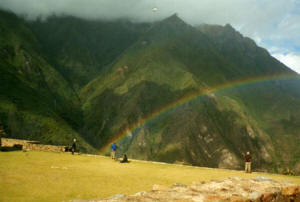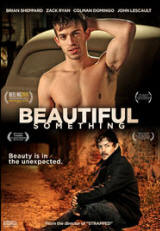|
The Hawaiian Night Before Christmas Children's Book
|
The Alternative to Inca Trail By Alex, the webmaster of Valencia City Guide - an independent resource on travelling in Valencia, Spain.
Whether for conservation or economic reasons, or both, the Inca Trail is no more the adventure it used to be. Overcrowded and strictly controlled, it pushes travellers to look for an alternative. Some do so because of over bookings. Others – because the Trail in its current state no more satisfies their adventure spirit. For the adventurous, such alternative trail does exist.
It isn’t lined with Inca stones, it is a rough mountain path, but in many ways it takes you to a much deeper, more real Peru. You may not see ruins three times a day but you go through two magnificent lost cities and some genuine untouched Quechua villages, not to mention the most incredible mountain views. What’s more – this trail is not for everyone, it is for those who can take it.
The trail takes you from Cachora village (three quarters of the way from Cuzco to Abancay), through the lost city of Choquequirao and the Vilcambamba mountain range to the village of Santa Teresa and from there to Machu Picchu. It takes 7 to 8 days to complete, depending on your preferences.
You will need to hire a guide in Cachora – a small village on the way to Abancay. It is very basic but it will have all the provisions you need, just make sure you come with enough cash, as there will be nowhere to get it. Also advisable is a mule for your backpacks, and one for riding if you are not a strong walker.
Days 1-3: The Road to Choquequirao
Day 4: The Big Push
Hopping over the stones to cross that valley river at the bottom, you just couldn’t help wondering if anyone ever passes that way. It was the primordial wilderness.
Another steep 3 hour ascent and we reached our station – a lonely hut with a roof full of corn cobs and the floor full of guinea pigs. The Quechua woman kindly cooked us dinner. Her husband had gone shopping – he would be back in 6 days time.
We also had a new member of the expedition. A small dog followed us from Choquequirao, as if she knew us all her life. She stayed with us for the rest of the trek. She was a real traveller, an easy-going little soul.
Day 5: The Other Side
That mountain pass was unforgettable. A border point between the known and the unknown. No matter how lost Choquequirao was, everything behind us was known, it was informed backpacking. For the last 4 days we saw the same view, only from different angles and in different corners. Now we have reached the edge of that view. This now was the second instalment, a whole new package. Everything was different, everything: the shapes, the colours, the path, the light, the air. It was the second wind, the re-birth. From now on we are on The Other Side.
On descent into the valley the path turned into a wide road practically etched into the face of the mountain wall. The spring came again – the flowers, the insects, the birds. We regained our joy. I took the t-shirt off and burned within an hour – a mistake I was to regret on Day 7.
2 hours later we were in the valley, approaching the village. It was a different world, locked away from the rest of the planet. Everything there was in slow motion, time had stopped. The people were quietly surprised to see us. They did not attempt to meet us, nor were they unfriendly. It simply seemed an odd thought that our two worlds would ever come into contact.
We headed straight for the shop and ate a whole box of chocolate. That night we camped by the river on a vast field, under the brightest stars ever. I had never seen a sky like that, so close to my face.
Day 6: The Grim
Then we went through a settlement. It was a large one (perhaps 400-500 people) and extremely spread out. But since it was raining we met almost no one. A ghost village. Victor pointed out a hospital, the only one in these mountains. I thought of the woman who hosted us on the fourth night. If she is unwell, she has to walk for at least a day or two to get help.
We camped right at the edge of the village. The owner of the field had his wife cook us dinner – the best fried potatoes I had ever tasted. Wet, worn out, covered in mud, stinking with 6 days of the trek, with numbed brains and full stomachs, we just wanted this day to be over and crawled into our tents.
Day 7: The Finest Hour
It was a leisurely walk for an hour along the edge of the valley, with a solid wall of mountains on the left. It was green and warm. Out dog chased sheep.
Finally, the valley ended and we began ascending. Once again, the vegetation vanished and it got dark. Soon we found ourselves in snow. The wind, blowing over the pass, created a mini-blizzard. It was a harsh colour scheme of black and white. The pass was barely noticeable through the white flakes. We were now at 5000m.
At the top of the pass we came across an apachita – a small column of flat stones. The Quechua put a stone there every time they pass to appease the gods of the mountains. They also believe that if you bring a stone from far away, leaving it on the apachita relieves you of a burden.
Two hours later, after a sharp descent, we were in the Santa Teresa valley. We had cleared a good 4000m of altitude in that time. Walking in the lush, tropical vegetation on the bank of a playful river, bathing in joyful sunshine, surrounded by all forms of life, it was so hard to believe that two hours earlier we were making our way through bold rocks and a blizzard. We’ve come back to sinful, cheeky Earth, with all Her diversity, joys and sorrows.
We came across a hut, where a smiling friendly woman sold us some tropical fruits to enjoy. Plastered out in sunshine by the river I was savouring the music of life so different to the silence of the mountains.
Down in the valley, it was a two days walk, but since it was all the same landscape from now on we took a truck to Santa Teresa. There is nothing like riding a truck after 6 days of wilderness. It seems like the height of civilisation.
In Santa Teresa it turned out that Machu Picchu was 3-4 hours away, we just had to follow the railroad. However, we only had 2 hours of daylight left and no mules for the backpacks, since we have let our guide go back.
We had a frustrated beer in a bar and came up with something really bloody clever – let’s just go anyway.
The trail went along the river, it was anything but easy – still ups and downs, though short, with the backpack digging into my burnt shoulders. We didn’t even clear half of the way before the darkness fell. At 8 PM we reached a dead-end. There had been a landslide and the trail was destroyed. A sign warned us that beyond lies extreme danger. We hesitated. Walk in the dark for three hours more just to get back where we started?
So we stepped beyond the sign. It was pitch-black. A tilted field of loose rocks sliding from underneath our feet into oblivion below. One wrong step and you slide with them – over a 20 metre drop. Only one free hand (flash-light in the other one) and 22kg on the back. After some very close encounters with the Grim Reaper we decided not to tempt fate any more.
We got back to the end of the path. It was now 10 PM. There wasn’t even anywhere to camp, and it wasn’t the safest thing to do anyway. But Gods heard our pleas. A campesino, carrying a sack of bananas appeared on the path. He was happy for us to follow him. Our gratitude had no limits.
The way over the landslide turned out to be much higher than we thought – as you would expect when a bunch of rocks falls over a path. Still very risky and narrow in places, it was bearable. Half an hour later we reached the rail tracks.
It wasn’t over yet. Two more hours on the train tracks. Not the easiest surface. Finally, the camping ground below Machu Pichu. We collapsed as soon as we entered. It was 1 AM and we started the day at 7 AM. We had walked a total of 15 hours, mostly over rough terrain, 8 of those with backpacks, and 2 of those in the extreme conditions of the landslide.
I wouldn’t swap this trek for three Inca Trails. There were no ruins on our trek, but we camped at a lost city. There were no Inca Steps, but we walked the genuine trails of the Quechua. We submerged into lost villages, we saw the hearts of the mountains and we flew to snowy 5000m. And the sight of Machu Picchu was that much sweeter.
Note: make sure you are accustomed to the altitude, you are reasonably fit, you do not need medical facilities, you are properly equipped with warm stuff for the extremely cold nights and very good boots – there is no hospital for days.
|
|






